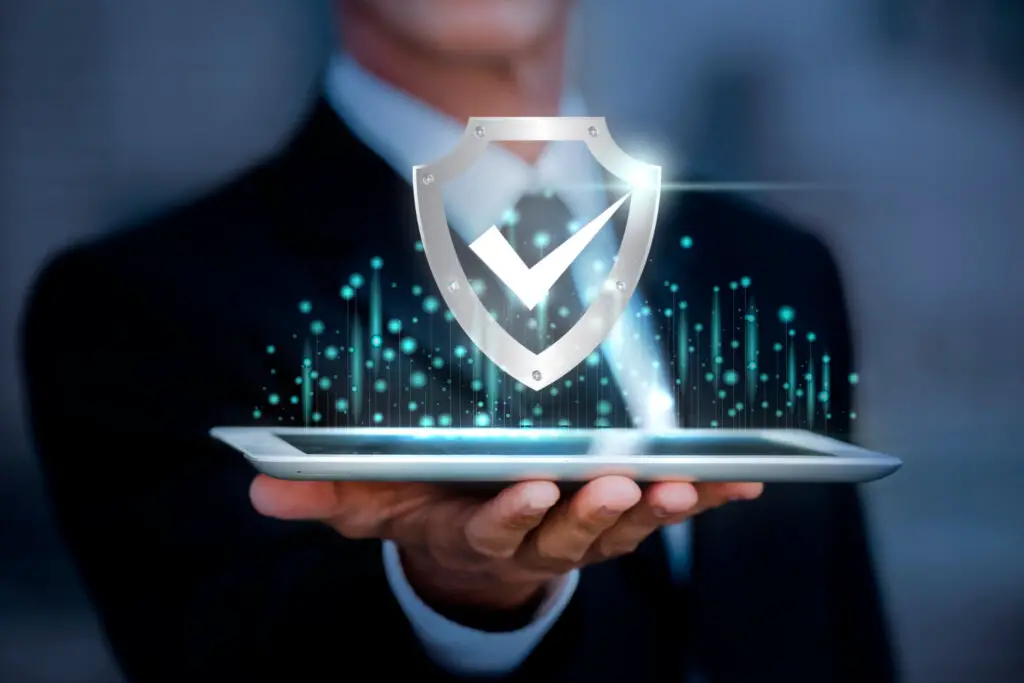Cyber threats pose one of the most significant risks to businesses today. Yet many organizations need to provide adequate cyber security awareness training to educate all employees properly. This oversight leaves firms vulnerable to data breaches, malware attacks, and other threats that can devastate operations. Implementing comprehensive cyber security training is mission-critical for every enterprise seeking to manage cyber risk.
Assessing Your Cyber Risks
Before exploring defensive solutions, companies must first understand exactly where and how they are vulnerable digitally across these areas:
Map Digital Assets
Thoroughly catalog equipment, devices, software systems, accounts, and data storage for daily business functions. This inventory highlights assets that need protection, like company computers, mobile devices, WiFi networks, cloud platforms, servers, workflow applications, HRIS, CRM systems, etc.
Audit Existing Safeguards
Analyze the cyber security controls currently in place across assets – e.g., access controls, encryption, firewalls, backups – to reveal protection gaps hackers can exploit. Weigh risks related to outdated operating systems, unpatched software vulnerabilities, and outdated antivirus solutions that are also prone to attacks.
Identify Bad Actors
Learn the variety of adversaries like cyber criminals, activist hackers, criminal insiders, and state-sponsored groups seeking to infiltrate your systems. Understanding the tactics and motivations of each group sharpens defenses against the most relevant threats to your industry.
Conduct Risk Analysis
A cyber security risk assessment examines the likelihood and potential business impact tied to identified vulnerabilities. Should a breach occur, compare the costs of transforming exposures against direct and indirect damages – like stolen funds, compromised data, reputational harm, and lost business. This analysis builds an ironclad case for properly staffed and funded security.
Building a Culture of Cyber Awareness
Technology alone cannot shield against human errors, enabling most cyber attacks. Fostering smart security habits organization-wide is essential.
Make Security a Leadership Priority
Executives must spearhead the charge, allocating sufficient budget to fortify defenses across devices, accounts, and company data. Leadership should mandate security protocols and model best practices around strong password hygiene and data handling.
Develop Policies & Training
Every employee should understand expected cyber security standards via clear policies tied to real-world threat examples. Well-structured cyber security training conveys both organization-wide protocols and departmental guidelines tailored to different access levels and job functions.
Reinforce Learning
One-off instructional meetings easily fade from memory. Better retention comes from reiterating concepts through refreshers, tests, visual aids, and interactive discussions simulating common risk scenarios. This constantly keeps security top of mind.
Encourage Reporting
Provide anonymous channels for staff to voice concerns over observed unsafe behaviors or possible network vulnerabilities without fear of repercussions. Treating observations seriously strengthens risk detection and culture.
Monitor & Refine
Ongoing analysis of metrics around failed login attempts, unusual user activity, increasing infections, and post-incident forensics reveals where better staff awareness is needed. Updated Training targets gaps.
Key Training Topics
Well-rounded awareness centers on both proactive personal conduct and quick incident response. Core topics include:
Secure Password Hygiene
Guidance on minimum length, complexity changes, proper protection, and never sharing credentials is required across all access points to prevent unauthorized access.
Safe Emailing
Recognizing and handling suspicious links and attachments housing malware or enabling data theft phishing attempts. Securely sharing sensitive data via encryption and access controls.
Responsible Internet & Social Media Use
Rules and best practices promote sound usage that avoids oversharing personal or company details that could compromise safety, enable cyber theft, or damage the brand.
Secure Web Browsing
Using company devices safely while working remotely, including only connecting to secure networks, avoiding questionable sites housing malware, logging out of services, and not downloading unauthorized software.
Managing Sensitive Data
Protocols around labeling, storage encryption, transmission encryption, limited retention periods, and tightly controlled sharing of customer, employee, and other confidential business data.
Recognizing & Reporting Threats
Skills for employees to recognize breaches, data leaks, or other suspicious digital activity and quickly communicate issues internally to incident response teams.
Incident Readiness & Recovery
Contingency planning keeps essential functions running if systems get held hostage by ransomware or suffer other attacks. Includes data backups, emergency communications procedures, and business continuity measures.
The Benefits of Cybersecurity Training
Investing in consistent, high-quality cybersecurity training for all employees has many tangible and intangible benefits. These benefits include:
Reduced Risk of Data Breaches:
Well-informed employees are significantly less likely to click on phishing links, expose credentials, enable unauthorized access, or otherwise mishandle sensitive data – among the leading root causes of expensive, reputation-damaging breaches. This greatly reduces regulatory fines, legal liability costs, and data recovery expenses in the aftermath.
Improved Overall Security Posture:
Armed with greater threat awareness and skills to safely handle systems and data, users strengthen rather than weaken organizational defenses across networks, cloud platforms, devices, and critical software assets. This shrinks the attack surface hackers can realistically exploit by hardening the soft underbelly.
Increased Productivity:
Less operational downtime occurs from ransomware, malware, and other attacks crippling productivity, which compromises customer deliverables. Smooth system availability bolsters workflow efficiency, collaboration, and customer service.
Enhanced Brand Reputation:
Better threat management minimizes public data breach notification requirements that erode consumer and partner trust. Data stewardship builds credibility and goodwill with customers.
Cybersecurity Training Resources
Many authoritative resources are available to help organizations implement cybersecurity training programs customized to risks, regulatory requirements, and business needs including:
- The National Institute of Standards and Technology (NIST) Cybersecurity Framework: Provides industry best practices for cyber defense priorities and maturity benchmarks tailored to company size and sector.
- The Center for Internet Security (CIS) Critical Security Controls: Identifies the most vetted technical and administrative safeguards with guidance to mitigate the most dangerous cyber attacks—a great training blueprint.
- The National Cyber Security Alliance (NCSA): Non-profit organization offering free guidance and tools for building a culture of security within both corporate and home environments via Training and leadership.
Cybersecurity Training Best Practices
Here are some essential best practices for implementing effective, sticky cyber Training in your business:
- Make Training Mandatory: Set strict requirements for new hire onboarding, annual refreshers, and availability of electives. Tie participation to job requisites and progression.
- Schedule Regular Retraining: Update materials continuously to address emerging threats. Frequent quick refreshers throughout the year boost retention over a single annual session. Make engaging via varied formats.
- Employ Varied Delivery Methods: Combine SCORM-based modules, brief update videos, discussion groups, visual aids, simulated phishing and hacking scenarios, and structured talks for more impactful and interesting delivery.
- Measure Effectiveness Diligently: Gauge skill improvements through testing comprehension of policies, threat literacy, proper reporting, and incident response. Weigh progress against metrics like reduced user-caused security events that quantify stronger institutional defense.
Conclusion
Ongoing end-user education significantly bolsters any technological defenses by correcting risky assumptions, behaviors, and security lapses that relentlessly threaten enterprises. By championing staff training alongside vigilant policies and infrastructure monitoring, companies can strategically manage cyber risk, safeguard critical assets, and ensure continuity of operations even in crisis scenarios.










0 Comments